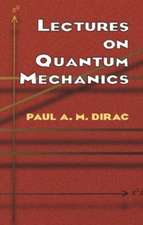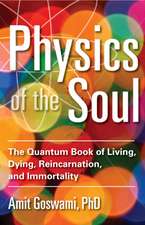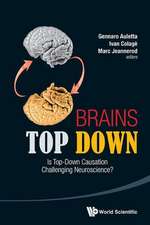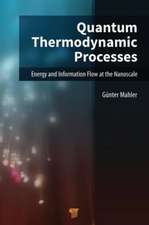Quantum Mechanics for Thinkers
Autor Gennaro Auletta, Shang-Yung Wangen Limba Engleză Hardback – 20 iun 2014
Preț: 626.60 lei
Preț vechi: 737.17 lei
-15% Nou
Puncte Express: 940
Preț estimativ în valută:
119.90€ • 124.94$ • 99.28£
119.90€ • 124.94$ • 99.28£
Carte tipărită la comandă
Livrare economică 03-17 aprilie
Preluare comenzi: 021 569.72.76
Specificații
ISBN-13: 9789814411714
ISBN-10: 981441171X
Pagini: 500
Ilustrații: 70 black & white illustrations
Dimensiuni: 152 x 229 x 30 mm
Greutate: 0.82 kg
Ediția:1
Editura: Jenny Stanford Publishing
Colecția Jenny Stanford Publishing
ISBN-10: 981441171X
Pagini: 500
Ilustrații: 70 black & white illustrations
Dimensiuni: 152 x 229 x 30 mm
Greutate: 0.82 kg
Ediția:1
Editura: Jenny Stanford Publishing
Colecția Jenny Stanford Publishing
Public țintă
Academic, Postgraduate, and Professional Practice & DevelopmentCuprins
Introduction. Basic Notions. Classical Mechanics. The Superposition Principle. The Quantum State as a Vector. The Quantization. The Complementarity Principle. Formal Developments. Uncertainty Principle. Quantum Dynamics. Angular Momentum and Spin. Conceptual Problems. The Measurement Problem. Non{Locality and Non{Separability. Quantum Information. Interpretation. Bibliography. Author Index. Subject Index. Solutions to Selected Problems.
Notă biografică
Gennaro Auletta, Shang-Yung Wang
Descriere
This book provides quick access to quantum mechanics without dealing with a true textbook that demands proper specialized studies in physics (and related mathematics) for about a couple of years. It consists of three parts: basic formalism, formal development, and ontological issues. The 70 figures are a crucial instrument for becoming acquainted in a "representative" way with abstract problems, and the 30 in-section boxes assist readers understand for difficult mathematical problems. The book offers a considerable number of clear and analytical treatments of what are considered the most difficult conceptual problems of the theory.























